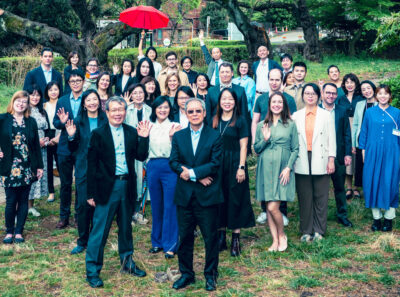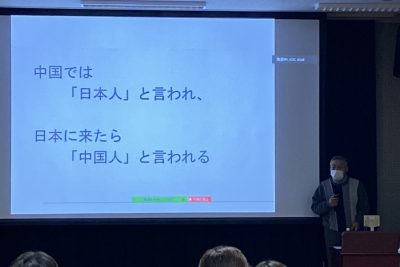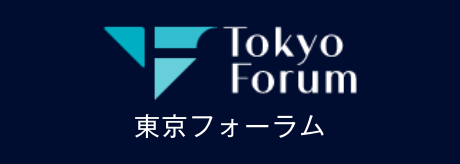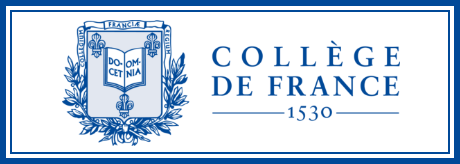Negotiating Knowledge of International Law: “Bankoku Koho” in Tokugawa and Meiji Japan
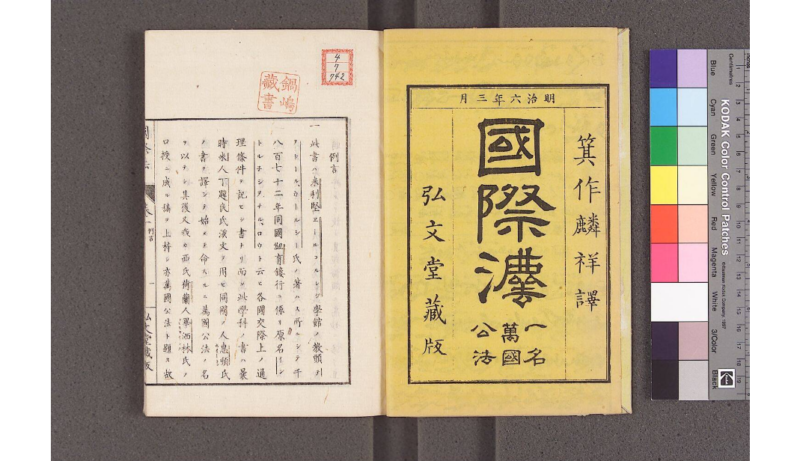
This blog post was created as part of the interdisciplinary zengaku seminar "Knowledge Encounters in Global History and the Contemporary World" offered at the University of Tokyo during the 2023-2024 academic year.
Author
KAWASAKI Takehiro
2nd Year Undergraduate Student, Humanities and Social Sciences III, College of Arts and Sciences Junior Division, The University of Tokyo
Introduction
International law is now known as “Kokusaiho”(国際法) in Japanese. However, the integration process of this concept in Japan was not straightforward. “Kokusaiho” (国際法) was only proposed by MITSUKURI Rinsho 箕作麟祥 in 1873.[i] Before 1873, international law was translated as “Bankoku Koho.” “Bankoku Koho” (ch. Wangguo gongfa, 万国公法) is originally the title of the Chinese version of Henry Wheaton’s Elements of International Law, which was translated by William Martin in 1864. The Tokugawa Shogunate imported and published it under the title Bankoku Koho in 1865 from Kaiseijo 開成所, the Shogunate’s official institution for Western studies. This version of classical Chinese (image 1) left a great impact on Japanese intellectuals. Its title, “Bankoku Koho” was used as the translation for international law.
Later, “Bankoku Koho” was gradually replaced by other terms. For instance, in May 1874, when the Tokyo Kaisei School 東京開成学校 was established, the course of international law was titled “Bankoku Koho.”[ii] In September, however, the curriculum was reorganized, and the title was changed to “Rekkoku Kosai ho” (列国交際法).[iii] In 1881, it was renamed again to “Kokusai Koho” (国際公法), which is a term still in use today.[iv] It is intriguing to delve into what caused the bloom and decline of the term “Bankoku Koho,” and explore its impact on Japanese modernization.
Many researchers have analyzed the acceptance of “Bankoku Koho” and a series of events that followed since it was one of the first examples of Japanese adaptation of modern Western studies. Revisiting the process through a knowledge encounter perspective, rather than evaluating to what extent the Japanese intellectuals understood Western ideas properly, I will analyze the dynamics of knowledge authorities around “Bankoku Koho”.
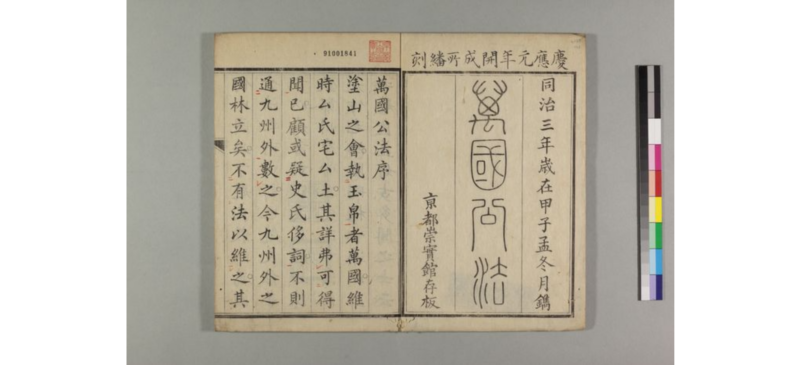
Image 1: Bankoku Koho (1865)
Kyoto University Rare Materials Digital Archive, https://rmda.kulib.kyoto-u.ac.jp/en/item/rb00010208
Tenchi no Kodo (天地の公道): The Confucian interpretation of “Bankoku Koho”
Under the absolute authority of Neo-Confucianism, Western studies were subjugated throughout the Edo period. Although Dutch Studies (Rangaku) contributed greatly to the development of anatomy and astronomy, it was considered no more than a detailed study of unimportant things by Neo-Confucian scholars. For example, SATO Issai 佐藤一斎, one of the most influential Neo Confucian scholars in the first half of the 19th century articulated that, Western knowledge, when compared to the principle that I Ching (The Book of Changes) pursues, is no more than the investigation of physical substances, therefore its principle is not essential. He then concluded that it’s better to begin with the principle of I Ching.[v]
However, the next generation of Neo Confucian scholars, including Issai’s disciples, questioned this conventional view and started to absorb Western knowledge actively. This situation saw the rise of the slogan “Tenchi no Kodo”, which emphasizes the universality of Confucian ideas. Innovative intellectuals in the mid-19th century often used this term to illustrate a new form of Neo-Confucianism. For instance, ASAKA Gonsai 安積艮斎 said in 1841,
The Way is the universal way, and learning is universal learning; rather than making the words of Confucius and Mencius private, take it as the virtue of the heaven and earth widely.[vi]
Also, YOKOI Shonan 横井小楠 said in his Kokuze Sanron (国是三論, 1860):
The momentum of the heaven and earth and the situation of the Myriad Countries is not something we human beings can manage to change, (...) So if we read the momentum of the heaven and earth and follow the situation of the Myriad Countries, and if we govern the heaven and earth according to the public way (Kokyo no Do), difficulties will be removed and we will be no more concerned with what we are concerned with today.[vii]
Therefore, “Tenchi no Kodo” indicates the universal and ideal way of governing the nations.
In the meantime, the Shogunate itself promoted Western studies for diplomatic and military necessities that arose due to the policy of opening the country (Kaikoku, 開国). They established an institute called Bansho Sirabesho 蕃書調所, later Kaiseijo 開成所 for translating and researching Western studies. As mentioned before, Bankoku Koho was published by Kaiseijo.
It has been assumed by scholars in the 20th century that “Bankoku Koho” and “Tenchi no Kodo” were recognized by contemporary intellectuals, since the fourth clause of the Charter Oath (Gokajo no Goseimon, 五箇条の御誓文, 1868) said,
We should renounce the conventions and governance should be based on the “public way of the universe” (Tenchi no Kodo).[viii]
The Oath’s draft says “Udai no Koho” (宇内の公法) instead of “Tenchi no Kodo” (天地の公道). The reason for confounding these two has been attributed to two factors: William Martin’s translation and his Confucian understanding. As international law contained concepts that did not exist in Chinese traditions, William Martin created neologisms from existing vocabulary to familiarize Chinese intellectuals with Western ideas. This contributed to the indigenization of ideas of international law both in China and in Japan.[ix] On the other hand, Confucianism assumed everything could be derived from the principle (ri, 理) and Confucian intellectuals were accustomed to interpreting things in this way, this led them to understand international law as natural law, something applicable to everybody unconditionally.[x]
Besides, it seems that some had the motivation to actively equate “Tenchi no Kodo” with “Bankoku Koho.” Confucian scholars were trying to establish universal Confucian justice under the name of “Tenchi no Kodo”; the Shogunate also needed justification for their new diplomatic policy. Interpreting international law as universal/natural law could meet these two demands all at once. By claiming that the Western world and Japan have the same universal principle, and that thanks to “Bankoku Koho,” the West is currently ahead of Japan in terms of achieving “Tenchi no Kodo,” both the Confucian scholar and the Shogunate can admit the progressiveness of the West and the necessity of diplomatic action, while not losing the authenticity of Confucian political theory.
Although the logical connection between “Bankoku Koho” and “Tenchi no Kodo” was strong for Confucian scholars, as I described in the Introduction, the translated term for “Bankoku Koho” disappeared from official usage in the 1870s. What has caused such a rapid decline of the Confucian interpretation of international law?
The decline of the Confucian interpretation of “Bankoku Koho”
Confucian interpretation of “Bankoku Koho” faced criticism from contemporary, Western-influenced intellectuals. The main critics were NISHI Amane 西周 and FUKUZAWA Yukichi 福沢諭吉, two of the most influential thinkers in early Modern Japan.
Yukichi directly criticized the diplomatic policy that depends on “Tenchi no Kodo”. He said in his famous Bunmei ron no Gairyaku (文明論之概略),
One scholar says that we should interact with other countries based on the public way of heaven and earth (Tenchi no Kodo), (...) we should trade and traffic freely, we should leave it to nature. Pursuing benefits without self-improvement is not proper. This is very true – but it only applies to the situations where individuals interact. The interaction of nations and interaction of individuals are of a very different nature (…).[xi]
It is no doubt that the “one scholar” refers to Confucian scholars. Yukichi succinctly described diplomacy theory “Tenchi no Kodo” in detail, and criticized Confucian political theory that believes politics and self-improvements are closely connected. And he continues,
On what earth can we rely on the public way of heaven and earth (Tenchi no Kodo) in diplomacy? It’s absolutely thoughtless. (...) As long as there are countries and governments, we have no way to remove their self-interests, and if we can’t remove their self-interests, we too should communicate with such countries having our own self-interests. [xii]
As a later scholar pointed out, dismantling the Confucian way of thought was the main mission for the first half of his career.[xiii] For him, the linkage of “Bankoku Koho” and “Tenchi no Kodo” was one example of Confucian ideas distorting the essence of Western studies. The matter of “Bankoku Koho” and “Tenchi no Kodo” is not just a problem of how to translate the concept of international law. It also functions as the hot topic between two different schools of thought, Confucianism and Yukichi's practical studies (jitsugaku, 実学).
The shift in the authority and order of the knowledge also contributed to the abolishment of the Confucian “Bankoku Koho” ideology. In 1871, Daigaku honko 大学本校, which had its root in an official institute for Neo-Confucianism Shoheizaka Gakumonjo 昌平坂学問所, was closed permanently. Official institutes for legal education were changed to Meiho ryo 明法寮, which was administered by the Ministry of Justice, and Daigaku Nanko 大学南校, which had its root in the aforementioned Kaiseijo.
Additionally, various versions of international law other than William Martin’s Chinese version were published. NISHI Amane published Vissering’s Bankoku Koho (畢洒林氏万国公法) in 1866, which came out of his experience of studying abroad in the Netherlands from 1862 to 1865. Although he used the term “Bankoku Koho,” his interpretation of international law had very different roots from that of Confucian scholars.[xiv] The reason for that is Vissering taught practical international law based on customs and treaties. In 1873, MITSUKURI Rinsho translated Theodor D. Woolsey’s Introduction to the Study of International Law and its title was Kokusai ho –also called as Bankoku Koho (国際法一名萬國公法, image 2), so the variety of both translations and interpretations of international law expanded to a much wider spectrum than William Martin’s Chinese version.

Image 2: Kokusai ho (1873)
Union Catalogue Database of Japanese Texts, https://doi.org/10.20730/300043326
The meaning of the conceptual transition of “Bankoku Koho”
Behind the decline of the word “Bankoku Koho,” there was a decline of Confucian interpretation of international law, which connected “Bankoku Koho” and “Tenchi no Kodo”. This was also one of the reasons why Neo-Confucianism lost its authority over other schools of thought.
The transition in the interpretation of “Bankoku Koho” represents the shift in authority of knowledge. In 1860s, when Bankoku Koho was officially published by Kaisei jo, those who read it were mainly Confucian scholars. However, only within a decade were various interpretations proposed by intellectuals including those with overseas experiences; and Confucian institutions were closed and new institutions were established.
At the same time, the discussion about “Bankoku Koho” also affected the shift in the order of knowledge. Confucian interpretation of international law was neither a misinterpretation nor a simple milestone of acceptance of Western thoughts, but was an attempt to restore the authority of Shogunate and Neo-Confucianism. It caused tension with Enlightenment thinkers. This tension between Confucianism and Western studies was different from the colonialist narrative, which deems progress occurs as Western ideas replace obsolete Confucianism. “Bankoku Koho” was a common interest among intellectuals, both Confucian and Western. The discussion around the interpretation of the concept played an important role beyond revealing its meaning and function to regulate international relations. It allowed Neo-Confucian scholars, the old authority of knowledge, and Enlightenment thinkers, as new challengers, to interact with each other on the same platform. If “Bankoku koho,” together with many other concepts that stirred discussion and debate around the time did not prepare this platform, our modern history might be a little different.
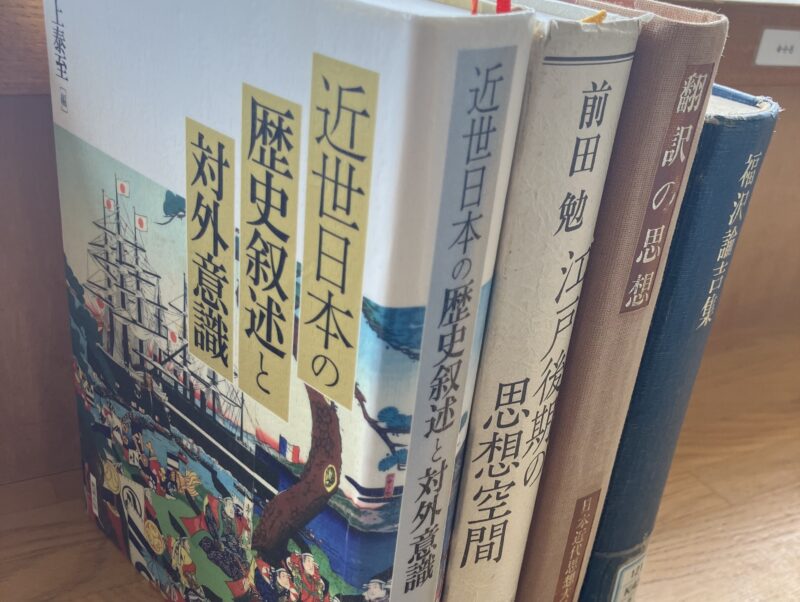
Image 3 Selected books of previous research (photo by the author)
[i] 尾佐竹猛著『国際法より観たる幕末外交物語』(東京 : 邦光堂、1930). p.7.
[ii] 東京大学出版会『東京大学百年史 部局史1』(1977). p.8.
[iii] Ibid. p.9.
[iv] Ibid. p.30.
[v] 「西洋の窮理は、形而下の数理なり。周易の窮理は、形而上の道理なり。道理は、譬ば則ち根株なり。数理は、譬えば則ち枝葉なり。枝葉は根株より生ず。能く其の根株を得れば、則ち枝葉之れに従う。窮理者は宜しく易理よりして入るべきなり。 」佐藤一斎著、久須本文雄訳注『言志四録』(東京:講談社、1994). p.843. Translations in this blog essay are by the author.
[vi] 「道は天下の公道なり學は天下の公學なり孔子孟子の得て私する所に非ず博く天下の善を取るべし」井上哲次郎著『日本朱子学派の哲学』(東京:富山房、1905). p.543.
[vii] 「天地の気運と万国の形勢は人為を以て私する事を得ざれば、(...)天地の気運に乗じ万国の事情に随い、公共の道を以て天下を経綸せば万方無碍にして、今日の憂る所は惣じて憂るに足らざるに至るべきなり。」「沼山対話」、横井小楠著、花山三郎訳注『国是三論』(東京:講談社、1986). pp.24-25.
[viii] 「舊來ノ陋習ヲ破り天地ノ公道ニ基クヘシ」学制百年史編集委員会『学制百年史(資料編)』、「五箇条の御誓文」(https://www.mext.go.jp/b_menu/hakusho/html/others/detail/1317933.htm)
[ix] 田岡良一著「西周助万国公法」、 『国際法外交雑誌』71 (1972). p.26. 張嘉寧著「『万国公法』成立事情と翻訳問題」、 加藤周一・丸山真男編『翻訳の思想』、『日本近代思想体系(第15巻)』(東京:岩波書店、1991). pp.393-394.
[x] 吉野作造著「我国近代史に於ける政治意識の発生」、『吉野作造選集(11 )』(東京:岩波書店, 1995). pp.261, 264~267.
[xi] 「又ある学者の説に云く、各国交際は天地の公道に基づきたるものなり、(...)自由に応益し、自由に往来し、唯天然に任すべきのみ。(...)自らを脩めずして人に多を求るは理の宜きものに非ず、(...)此説真に然り。一人と一人との私交においては真に斯の如くなるべしと雖ども、各国の交際と人々の私交は全く趣を異にするものなり。」福沢諭吉著「文明論之概略」、『近代日本思想体系』2(東京:筑摩書房、1975). p.223.
[xii] 「(然るに東西懸隔、殊域の外国人に対して、)其交際に天地の公道を頼みにするとは果たして何の心ぞや。迂闊も亦甚し。(…)世界中に国を立てて政府のあらん限りは、其国民の私情を除くの術ある可らず。其私情を除くの術あらざれば、我も亦これに接するに私情を以てせざる可らず。」Ibid. p.224.
[xiii] 丸山真男著「福沢諭吉の儒教批判」『丸山眞男集(第二巻)』(東京:岩波書店、1996). p.142.
[xiv] 田岡良一著「西周助万国公法」. p.26


